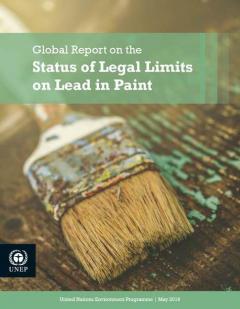
Exposure to lead is harmful to children and the health effects are generally irreversible and can have a lifelong impact. Evidence of reduced intelligence caused by childhood exposure to lead has led the World Health Organization to list “lead caused mental retardation” as a recognized disease. WHO lists it as one of the top ten diseases whose health burden among children is due to modifiable environmental factors
In order to measure progress on the establishment of national legally-binding controls on lead in paint, UNEP and WHO have requested information from government representatives from every country. As of July 31, 2015, 59 countries have verified that their national governments have established legally-binding limits on lead in paints. While WHO has been provided with legal citations, the Alliance needs detailed information for each of the national laws, regulations and procedures that are relevant to controlling lead in paint. WRI has been hired to conduct legal research on these laws and regulations and to compile this information in a report that provides a detailed “snapshot” of the lead paint controls currently in place and captures evidence of implementation in a selection of countries.
WRI carried out this research through country researchers. The Association of Environmental Justice in Israel (AEJI) was conducted the research on the legal status of lead in paint in Israel. The researcher is Raz Meltzer, 4th year student at the Law faculty (2016). His expertise is on environmental law and policy.
The legal research has been conducted in any national included legally-binding controls and standards for lead in paint, including laws, regulations and procedures for the following two categories of countries :
(a) Countries known to have legal limits (Israel is included in this list);
(b) Countries which have not responded to the WHO request for information, so the status of legally-binding controls is uncertain.
The output was analyzed and summarized in the new Global Report , issued by UNEP on 25 May 2016.
https://wedocs.unep.org/bitstream/handle/20.500.11822/11348/Limits-Lead-...

